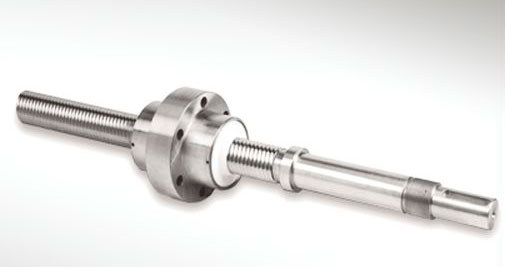
Roller screw actuators can be used in place of hydraulics or pneumatic for high loads and fast cycles. Advantages include eliminating a complex system of valves, pumps, filters, and sensors; decreasing space; lengthening working lives; and reducing maintenance. The absence of high-pressure fluid also means that leaks do not exist and noise levels diminish significantly. Adding servo control to electric-mechanical actuators offers a stronger connection between the motion software and load, allowing for programmed positioning, velocity, and thrust.
Planetary roller screws fit a wide range of applications that require high speed, high load capacity, and high rigidity. Inverted roller screws offer the same benefits, but with a better force-to-size ratio and the ability to easily customize the screw shaft, making them ideal for integration into actuators and other linear motion systems.
Recirculating roller screws offer micron-level positioning capabilities for applications where both positioning accuracy and rigidity are critical. And differential roller screws offer the unique combination of sub-micron positioning, good thrust force, and high rigidity for the most challenging, high-precision applications.

With multiple design variations – from planetary to differential types – roller screws can address a wide range of application requirements. But all these variations have two things in common: high thrust force capabilities and high rigidity.
Cost-cutting Tips
From the outset, roller screws might appear to be an ineffective cost solution. However, in the long run they cost about one of seven, that of ball screws because they are not replaced as often.
Questions to consider are: How much does downtime cost? How much space does a 4-in. ball screw and its support bearings and couplings use compared to a 1.18-in. roller screw? How can one measure unspent money?
If the system being designed runs 15 times longer between repair cycles or is 40% the size, costs can be significantly reduced.
Post time: Dec-29-2023






